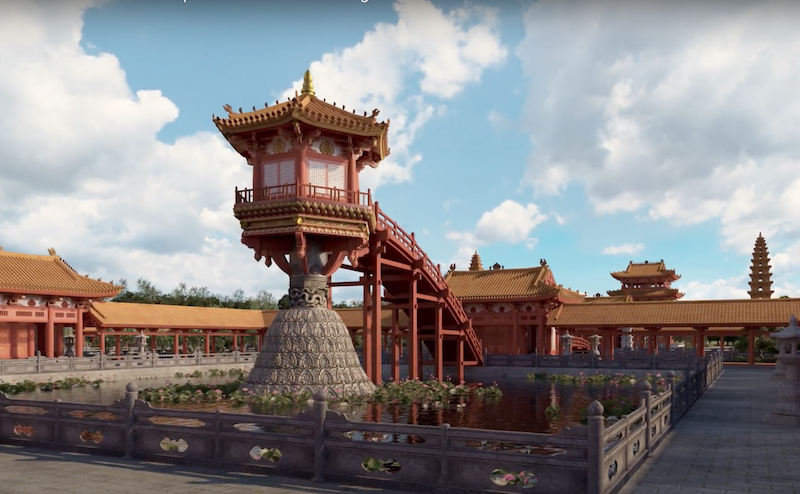Visitors to Hanoi have the opportunity to see the One Pillar Pagoda – Dien Huu in the Ly dynasty (1009-1226) through virtual reality (VR) technology at the Vietnam Museum of Fine Arts in the frame of an ongoing exhibition there.
|
An image of One Pillar Pagoda restored via VR |
The exhibition was jointly organized by the Vietnam Fine Arts Museum and SEN Heritage in celebration with 75 years of anniversary of President Ho Chi Minh’s signing Decree No. 65/SL on the preservation of national cultural monuments and heritage (November 23, 1945 – November 23, 2020).
Visitors at this exhibition will see ancient French photos of the architecture of One Pillar pagoda in the Nguyen dynasty, pictures of the pagoda collapsed in 1954 and restored in 1955 by architect Nguyen Ba Lang, images of national treasures such as the statue of Buddha at Phat Tich Pagoda (1057), the replica of Dam Pagoda (1094) pillar, Sung Thien Dien Linh epitaph (1121) and artifacts excavated at the Thang Long Imperial Citadel.
In addition, the event exhibits a number of objects and scale models of architectural works of the Ly dynasty. including the One Pillar pagoda and Dien Huu Ly pagoda dynasty through 3D pictures, 3D movies, virtual reality technology (VR3D) products.
Speaking at the opening of the exhibition, Mr. Nguyen Anh Minh, director of the Vietnam Fine Arts Museum said that One Pillar Pagoda is a unique architectural work of Vietnamese Buddhism, the most famous symbol of Thang Long -Dong Do-Hanoi millenary culture.
Vietnamese and international visitors are familiar with images of One Pillar Pagoda that was reconstructed in the 1955 by architect Nguyen Ba Lang with the Nguyen dynasty style, after the pagoda was blasted on November 9, 1954.
|
The One Pillar Pagoda image at the Vietnam Fine Arts Museum |
This display at the Vietnam Fine Arts Museum is a research result of the SEN Heritage group, inherited the pagoda studies from senior scholars. The group has constructed the whole Dien Huu pagoda and the architecture of One Pillar Pagoda in the Ly dynasty using virtual reality technology (VR3D).
Dien Huy Buddhist Temple and its One Pillar Pagoda were built in 1049 and significantly restored in 1105 under the reign of King Ly Nhan Tong. This is a unique religious architecture of the Ly dynasty (1009 – 1226) and a symbol of the thousand-year cultural history of Thang Long – Hanoi.
From hundreds of art artifacts remaining after many ups and downs of history, for the first time, the VR products will help visitors experience the ancient images of One Pillar Pagoda, and the golden architectural heritage space 800 years ago.
However, according to Mr. Minh, the research results and 3D rendering of the Ly Dynasty pagoda of the SEN Heritage group is just a hypothesis, it should be studied in a methodical and prudent manner to know the exact architecture of the construction.
In the framework of the exhibition, a seminar of discussion about the form of one pillar and the architectural mandala of the Ly dynasty will take place on November 26.


.jpg)

